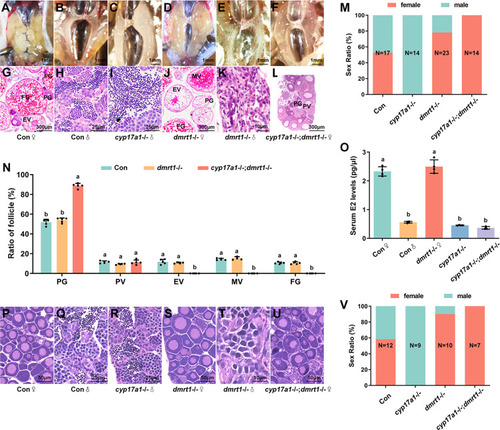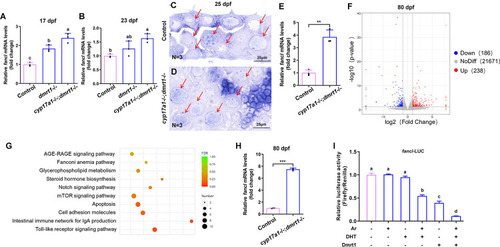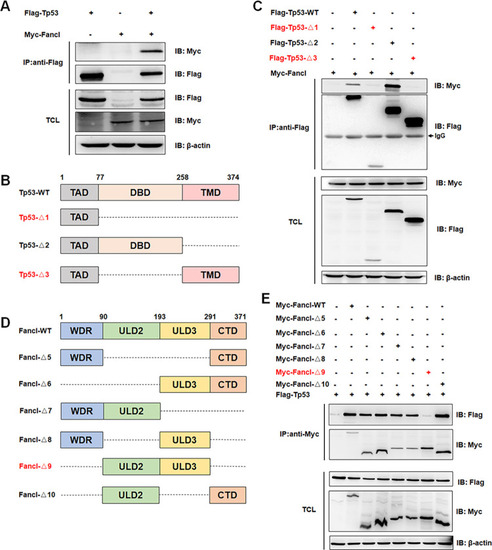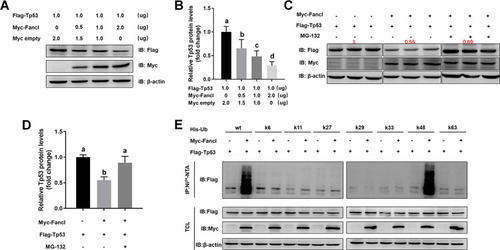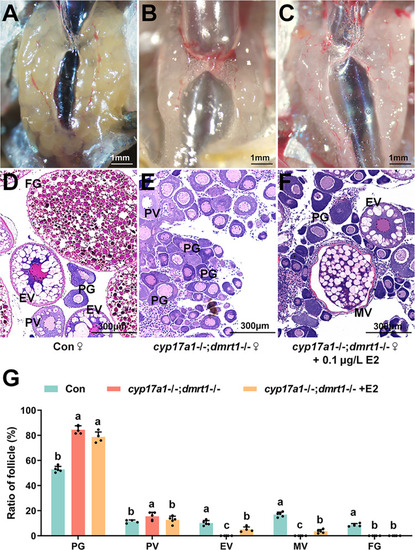- Title
-
New insights into the all-testis differentiation in zebrafish with compromised endogenous androgen and estrogen synthesis
- Authors
- Ruan, Y., Li, X., Wang, X., Zhai, G., Lou, Q., Jin, X., He, J., Mei, J., Xiao, W., Gui, J., Yin, Z.
- Source
- Full text @ PLoS Genet.
|
Additional depletion of (A–F) Anatomical examination of the gonads from the control fish, |
|
The (A and B) Relative expression of |
|
Additional depletion of (A–F) Anatomical examination of the gonads from the control fish, |
|
Fancl interacts with Tp53 in HEK293T cells. (A) The interaction of Fancl with Tp53 in HEK293T cells as revealed by the Co-IP assay. Myc-tagged Fancl and Flag-tagged Tp53 were transfected into HEK293T cells, then anti-Flag antibody-conjugated agarose beads were used for immune-precipitation. (B and C) Domain mapping revealed that the DBD domain of Tp53 is required for their interaction. TAD, transactivation domain. DBD, DNA binding domain. TMD, tetramerization domain. (D and E) Domain mapping revealed that the multiple domains, WDR and CTD, of Fancl are required for their interaction. WDR, WD-repeat domain. ULD2, UBC-like domain 2. ULD3, UBC-like domain 3. CTD, C-terminal domain. IP, immunoprecipitation. IB, immunoblotting. TCL, total cell lysate. |
|
Fancl promoted K48-linked ubiquitination of Tp53 in HEK293T cells. (A) Transfection of Myc-tagged Fancl decreased the levels of Flag-tagged Tp53 in a dose-dependent manner. (B) Quantification of the western blot bands of the target protein, Tp53. (C) The proteasome inhibitor, MG-132, blocked the Fancl-mediated Tp53 destabilization. (D) Quantification of the western blot bands of the target protein, Tp53. (E) Fancl promotes K48-linked ubiquitination, rather than K6-, K11-, K27-, K29-, K33-, K63-linked ubiquitination of Tp53. IP, immunoprecipitation. IB, immunoblotting. TCL, total cell lysate. Different letters in the bar charts represent significant differences. |
|
Administration of 17β-estradiol rescued the arrested folliculogenesis of (A–C) Histological analysis of the ovaries from the control fish, |

